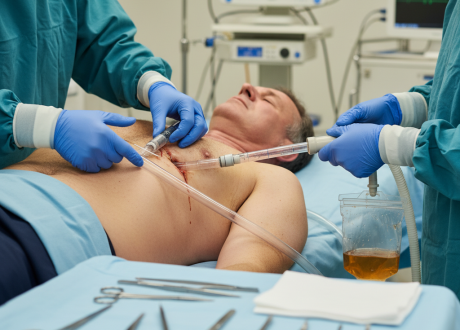July 19, 2024
Written by Samuel Rouleau
![]()
An analysis of the NEAR database demonstrated a lower first-pass success rate of 89.2% for patients with anatomically difficult airways (ADA) compared to 93.7% in the control group. First-pass success for physiologic difficult airways (PDA) was 92.9% and fell to 87.4% for those with both ADA/PDA.
Rain is wet and first-pass success for anatomically difficult airways
This retrospective analysis of the NEAR database included 13,938¬† patients over the age of 14 who underwent rapid sequence intubation (RSI) in the emergency department (ED). 3664 were classified as ADA, 1304 as PDA, 7103 as both PDA and ADA, and 1867 as neither. Compared to the control group, those with ADA were almost half as likely to have first pass success (aOR 0.53, 95%CI 0.40вАУ0.68), but the group with lowest first-pass success were those with both ADA/PDA (aOR 0.44, 95%CI 0.34вАУ0.56). Importantly, in those with only PDA, there was no association with lower rate of first-pass success. The rate of peri-intubation cardiac arrest was the same in those with PDA and both ADA/PDA at 1.5%. Specifically, the authors include a great discussion of how obesity can be both anatomically difficult (poor view) and physiologic difficult (post-intubation hypoxemia) (check out supplemental tables 2 and 3).
I have a few concerns that limit my enthusiasm. The control group is 13% of the entire cohort, and over half are defined as having both ADA and PDA. Either the NEAR database is composed of extremely difficult intubations, or the criteria used to classify ADA and PDA are entirely too sensitive. This, compared with the large potential for bias in how the data were collected, limits the strength of the findings of this study. Lastly, I have a personal rule that when the statistic methodology seems overly complicated, this may indicate a weakness in study design.
How will this change my practice?
Simply put, no!
- Overall, I find that identifying and creating a plan for the anatomically difficult airway is well-emphasized, and we should take this same approach for physiologic difficult airways.
- I would be curious for a study on awake intubation versus RSI in physiologic difficult airways. (I think we should probably be doing more awake intubations than we are now).
Source
First-Attempt Success Between Anatomically and Physiologically Difficult Airways in the National Emergency Airway Registry. Anesth Analg. 2024;138(6):1249-1259. doi:10.1213/ANE.0000000000006828








